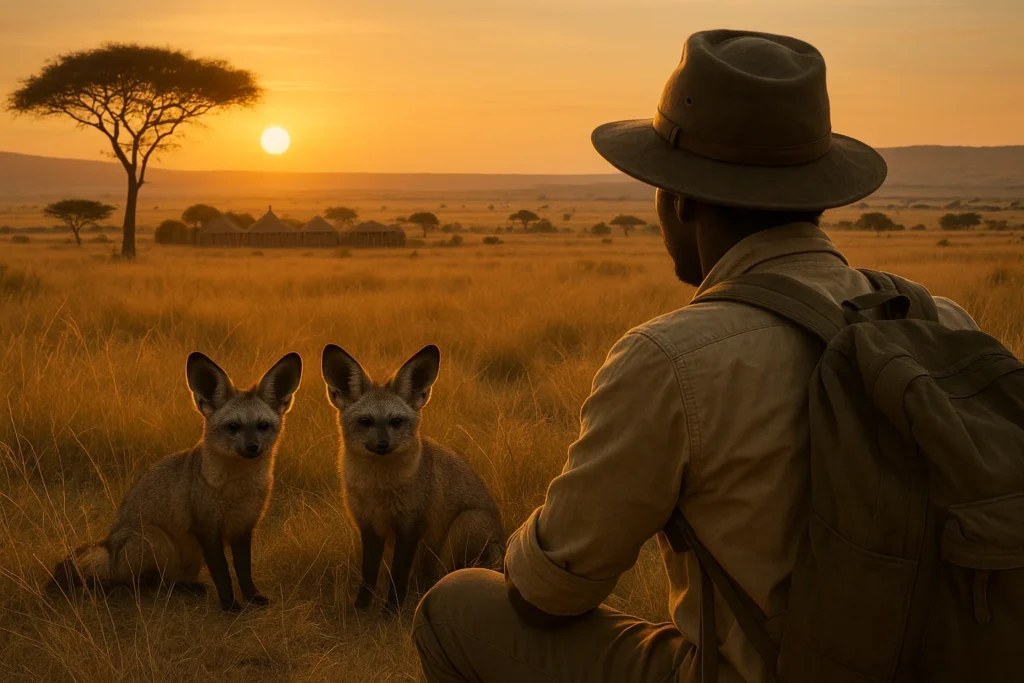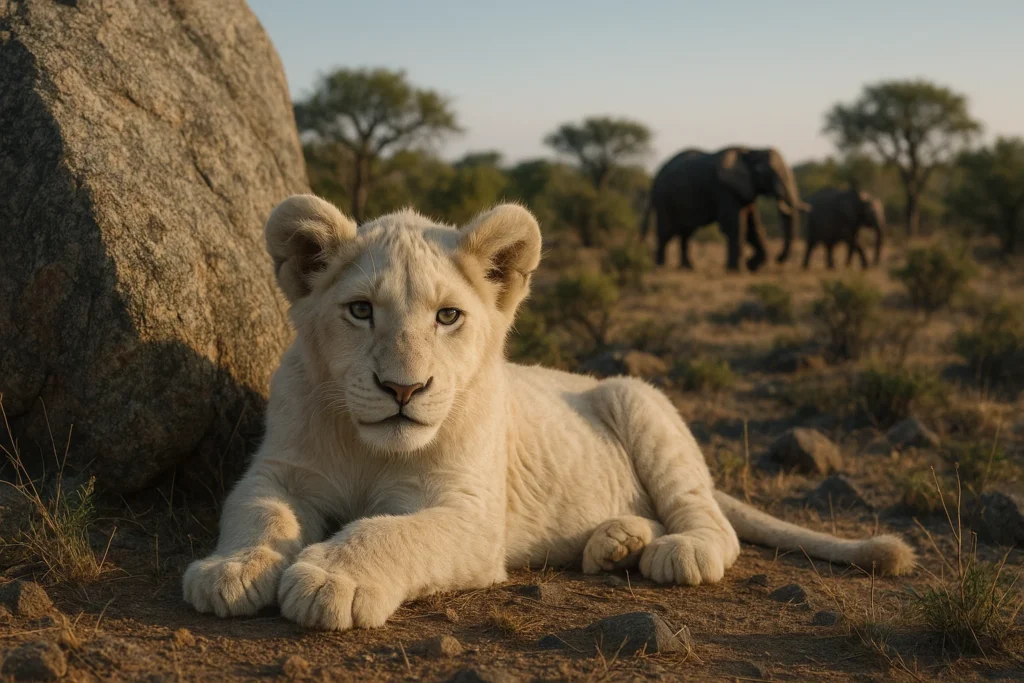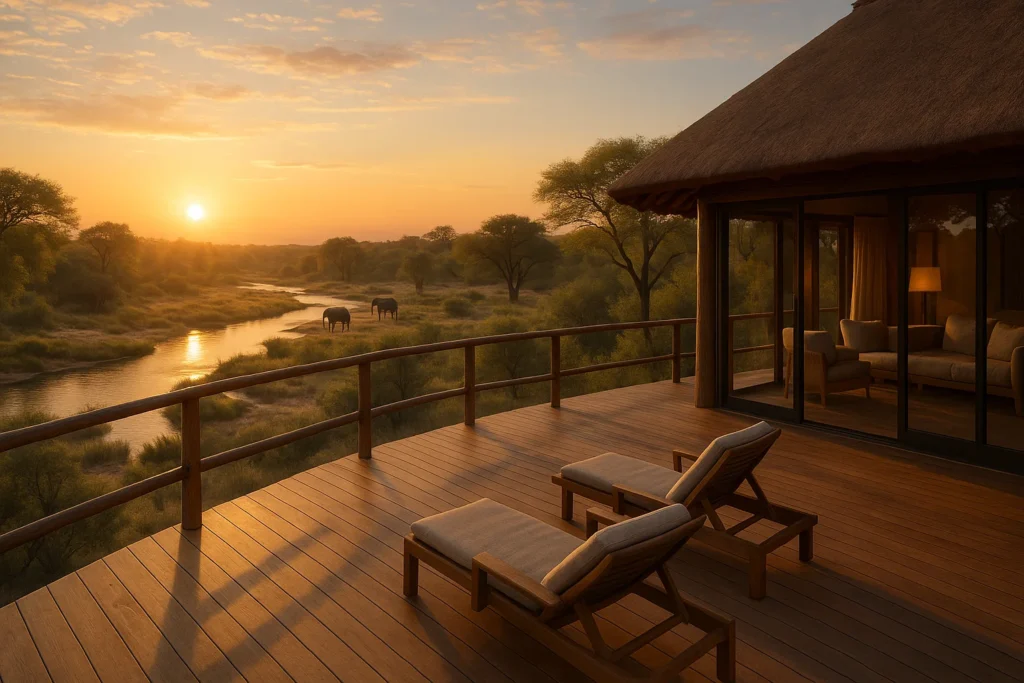The Mara beyond lions and elephants
While the Big Five often steal the spotlight, the Maasai Mara hides a vivid world of lesser-known species waiting to be discovered. With patient guiding and off‑peak game drives—especially at dawn, dusk, or after dark—travelers may spot elusive carnivores like servals, caracals, and bat‑eared foxes, along with endemic birdlife rarely seen from a safari vehicle.
Servals and caracals
These slender wild cats—servals with their long legs and spotted coats, and tuft‑eared caracals—are rarely photographed but thrill viewers with their hunting prowess. They prefer tall grass and woodland edges, making early morning drives essential.
Bat‑eared foxes
Distinguished by their oversized ears and playful social behavior, bat‑eared foxes forage termites and insects and may appear near den sites at dawn or dusk. They are often seen in family groups and are one of the savannah’s most charming hidden gems.
Nocturnal wonders: aardvarks, honey badgers and aardwolves
Night drives unveil a fascinating cast of characters: the termite‑rooting aardvark, the fierce honey badger, and the shy aardwolf. These creatures are seldom seen but, in the Mara conservancies, well‑executed nocturnal safaris increase the odds of encounter.
Rich birdlife
Home to over 500 bird species, the Mara is a critical area for raptors and endemic woodland birds. Look for secretary birds stalking prey across open plains, endangered martial eagles soaring overhead, lilac‑breasted rollers and pygmy falcons darting through scrub and riverine areas.
Responsible interaction with the Maasai community
What to expect—and avoid
Visiting a Maasai village (manyatta) can offer deep insight—but it’s essential to choose ethical, community‑managed experiences. Choose tours where a portion of fees supports local community services such as education or healthcare, and avoid staged “photo‑op” encounters meant solely for tourist consumption.
Best practices include asking permission before photographing, dressing modestly, and engaging with curiosity and respect—not voyeurism
Cultural experiences you can add to your safari
Small group visits to community‑run bomas may include storytelling by elders, beadwork workshops led by Maasai women, cooking lessons (like preparing traditional ugali), spear‑throwing demos, and authentic song and dance performances.
Evening gatherings around a fire, where visitors are invited to participate in a traditional Ngoma dance, offer moving shared moments—and every shilling spent contributes directly to the village rather than middlemen.
Safari upgrades: walking & conservancy experiences
Conservancies: quieter roads, richer wildlife, community-owned land
The conservancy model—like Mara Naboisho, Olare Motorogi, and Naboisho—provides access to unfenced Maasai lands leased to safari operators. These areas impose vehicle quotas, limit tourist beds, and offer walking safaris and night drives unlike inside the crowded national reserve.
By choosing a lodge in a community‑run conservancy, you’re contributing to Maasai income through lease fees and jobs in guiding, hospitality, and craftwork. Local decision‑making keeps tourism benefits within the community while preserving key wildlife corridors.
Walking safaris: slow travel, deep immersion
On foot with Maasai guides across conservancy lands, travelers experience the ecosystem closely—from dung beetles to stealth predators. Wilderness camps move nightly, support local staff, and minimize impact. This style rewards the curious traveler willing to step off the beaten path.
Why choosing ethical, sustainable operators matters
- Protects rare wildlife: conservancies with low-traffic rules offer better chances of witnessing small and nocturnal species in undisturbed habitat.
- Empowers Maasai communities: fair lease practices, local employment, and direct economic return sustain traditional life without forcing assimilation or exploitation.
- Minimizes tourism’s footprint: eco-sensitive camps use solar energy, proper refuse disposal, limit group size, and avoid mass tourism disruptions—especially during the Great Migration seasons.
Look for operators certified by Ecotourism Kenya or similar bodies. Or those with explicitly community‑based and Maasai‑owned partnerships like certain local camps and conservancy‑run lodges.
Conclusion: A richer Mara experience awaits
While the Big Five remain unforgettable, the true magic of the Maasai Mara lies in the hidden scenes: the silent leap of a serval, the twitching ears of a bat‑eared fox at dusk, a Maasai elder’s story by firelight, or the thrill of stepping into the wilderness on foot. By choosing responsible conservancies, community‑run camps, and ethical cultural visits, curious travelers unlock a more meaningful, immersive safari—one that benefits nature and people alike.
Frequently Asked Questions (FAQs)
Early morning, late afternoon, and guided night drives in conservancy lands increase the chance of spotting elusive species.
Check whether the tour is community‑run, fees support local projects directly, and experiences aren’t staged or overly commercial.
Yes—when led by trained local Maasai guides accustomed to the bush. They teach silent movement and safety around wildlife.
Modest, neutral-colored clothing; long sleeves and pants are respectful and help shield from sun or bugs.
Use operators with transparent community-benefit models, choose camps within Maasai conservancies, and support local handicrafts backed by fair wages.
Yes. Keep your binoculars ready near rivers or acacia groves to see species like martial eagles, pygmy falcons, secretary birds, and rollers.
Many authentic experiences offer hands-on activities—storytelling, beading, cooking lessons, even dancing alongside villagers.






